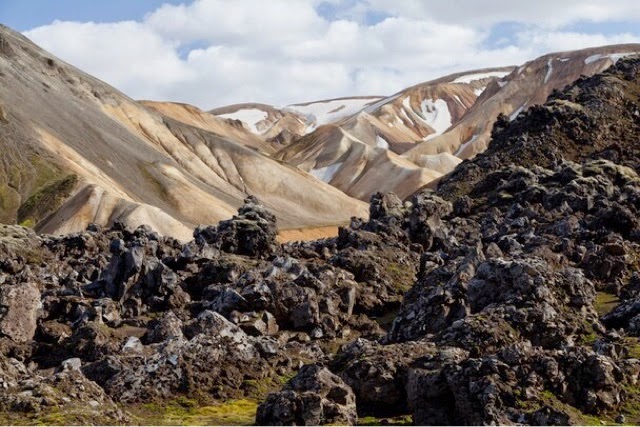Something is interfering with me making links, I'll clean this up in the future.
Glima
Iceland is a gorgeous country, certainly the most breath-taking I have ever seen. From the volcanos, waterfalls, mountains rising from the ocean to perfect pasture dotted with jets of steam and moonscape dotted with glacier - it was amazing. Everyone was wonderful and friendly. I ate lamb stew every day, washed down with a malt soda.
I hadn't actually known wrestling, or Glima, is Iceland's national sport. Earliest known references to Glima go back to the year 790 A.D. Thor was the Viking god of wrestling. The Viking's martial prowess was passed down as entertainment and sport. Combat skills took several forms like water Glima where competitors would control their opponent under the water until they submitted.
Wikipedia and it's sources have some great information here
The landscape of Iceland has some areas that look very nice to fall on:
And some that look like no amount of practice falling would have me escape injury:
Some of the water is not for swimming - glacier rivers were cold enough to take my breath away, yet we ate at a few restaurants that cooked over geothermal vents, and there was a park that boiled eggs in a geothermal pool for the tourists. We walked across glacier to a mountain peak uncomfortably hot to sit on, where we ate sausage cooked in tin foil buried in volcanic ground. Water comes from the ground boiling, and signs like this are easily found:
It would be a short swim if you got thrown in.
The one area close to where we stayed had a restaurant and a memorial to a famous Icelandic Glima master. Videos were playing constantly on a TV in the corner, and I enjoyed watching them.
Like other arts, Glima has the same human anatomy to work with. One of the rules, "Don't look at your opponent at all," is much like an exercise my wife will briefly do at the start of her classes. We are supposed to learn to move by feel in any grappling style, and all arts seem to have some form of drill to train this be it wrestling with the eyes closed, or blindfolded, or in the dark.
Another rule, "Don't land on your opponent," effectively rules out any Makikomi or Uke-Gatame techniques. Staying upright effectively rules out a ground game - but in a land of boiling water, serrated lava rock, icy oceans and steep high cliffs keeping one's footing is life and death. Certainly, Judo and another grappling styles have a strategy of staying standing where possible and ground work is a secondary skill. This helps to emphasize the initial grappling phase. In Aikido, staying upright is a mandatory strategy as we practice for multiple attackers. Most Viking weapons like swords and axes are best deployed from standing. Strategy and philosophy aside, I weigh 220lbs (100kg) and if I went from standing to dropping my full body weight knees first on to someone's chest, I could hurt someone. So, staying standing is a safer practice for both me and my partner. (Interesting for me, in practicing to stay standing I can better aim and time a knee to someone's chest).
The mandatory grip is on the specialized belt that resembles a climbing harness. This would historically control a scabbard and someone's ability to bring a weapon to bear. For modern competition, this means no strikes and of course there is no weapon to control.
It is a great exercise that certainly trains some specific and isolated combat skills, but the basic competition Glima is not the brutal fighting style of 1200 years ago. Combat Glima itself was outlawed in Iceland for 100 years as injures and deaths were too common. Definitely to Glima's credit, it survived when many other martial arts and entire cultures vanished. While associated with Thor and the old Viking religion, Glima survived Iceland's conversion to Christianity. Few other martial arts, maybe Sumo
http://www.sumotalk.com/history.htm
or Pankration
http://en.m.wikipedia.org/wiki/Pankration
can claim such a history - and both of these arts have been modified over time. Glima remains a national sport and taught in schools while Canada's national sport of hockey is being accused of being too injurious even for professional athletes.
I guess I'm looking at a brutal combat system over a thousand years old that has been changed for safe practice and learning. As an Aikido student, I am told we are so much less martially than we were. As a Taijiquan student, I am told the art is so much less martial than it was. Both of these arts are far, far younger than Glima. I wonder what Aikido would look like in 1000 years? Or Taijiquan in several hundred?
Glima 2005 championship
Archival Glima footage
1932 Glima footage
Enoksen Combat Glima




I'm glad to have discovered your blog. I will be returning regularly.
ReplyDelete